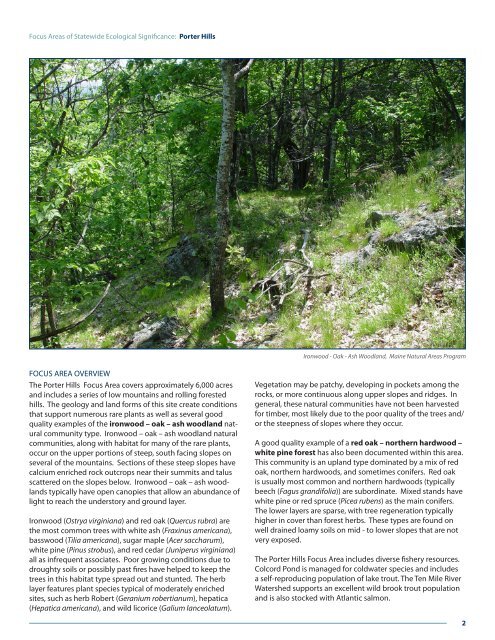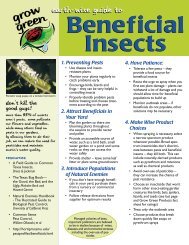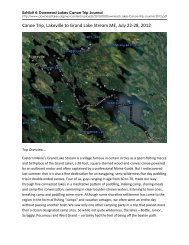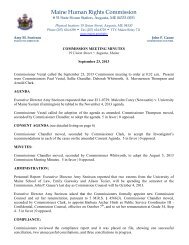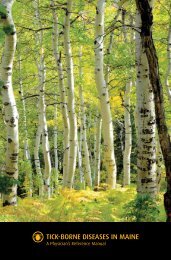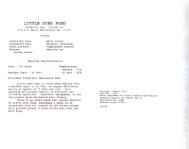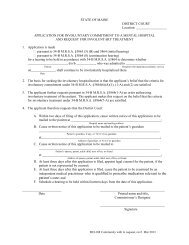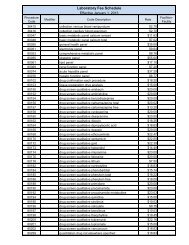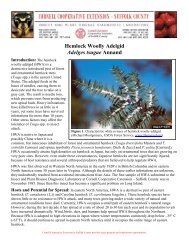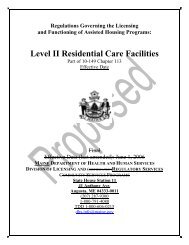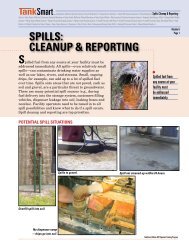PDF-2 MB - Maine.gov
PDF-2 MB - Maine.gov
PDF-2 MB - Maine.gov
Create successful ePaper yourself
Turn your PDF publications into a flip-book with our unique Google optimized e-Paper software.
Focus Areas of Statewide Ecological Significance: Porter Hills<br />
Ironwood - Oak - Ash Woodland, <strong>Maine</strong> Natural Areas Program<br />
FOCUS AREA OVERVIEW<br />
The Porter Hills Focus Area covers approximately 6,000 acres<br />
and includes a series of low mountains and rolling forested<br />
hills. The geology and land forms of this site create conditions<br />
that support numerous rare plants as well as several good<br />
quality examples of the ironwood – oak – ash woodland natural<br />
community type. Ironwood – oak – ash woodland natural<br />
communities, along with habitat for many of the rare plants,<br />
occur on the upper portions of steep, south facing slopes on<br />
several of the mountains. Sections of these steep slopes have<br />
calcium enriched rock outcrops near their summits and talus<br />
scattered on the slopes below. Ironwood – oak – ash woodlands<br />
typically have open canopies that allow an abundance of<br />
light to reach the understory and ground layer.<br />
Ironwood (Ostrya virginiana) and red oak (Quercus rubra) are<br />
the most common trees with white ash (Fraxinus americana),<br />
basswood (Tilia americana), sugar maple (Acer saccharum),<br />
white pine (Pinus strobus), and red cedar (Juniperus virginiana)<br />
all as infrequent associates. Poor growing conditions due to<br />
droughty soils or possibly past fires have helped to keep the<br />
trees in this habitat type spread out and stunted. The herb<br />
layer features plant species typical of moderately enriched<br />
sites, such as herb Robert (Geranium robertianum), hepatica<br />
(Hepatica americana), and wild licorice (Galium lanceolatum).<br />
Vegetation may be patchy, developing in pockets among the<br />
rocks, or more continuous along upper slopes and ridges. In<br />
general, these natural communities have not been harvested<br />
for timber, most likely due to the poor quality of the trees and/<br />
or the steepness of slopes where they occur.<br />
A good quality example of a red oak – northern hardwood –<br />
white pine forest has also been documented within this area.<br />
This community is an upland type dominated by a mix of red<br />
oak, northern hardwoods, and sometimes conifers. Red oak<br />
is usually most common and northern hardwoods (typically<br />
beech (Fagus grandifolia)) are subordinate. Mixed stands have<br />
white pine or red spruce (Picea rubens) as the main conifers.<br />
The lower layers are sparse, with tree regeneration typically<br />
higher in cover than forest herbs. These types are found on<br />
well drained loamy soils on mid - to lower slopes that are not<br />
very exposed.<br />
The Porter Hills Focus Area includes diverse fishery resources.<br />
Colcord Pond is managed for coldwater species and includes<br />
a self-reproducing population of lake trout. The Ten Mile River<br />
Watershed supports an excellent wild brook trout population<br />
and is also stocked with Atlantic salmon.<br />
2


